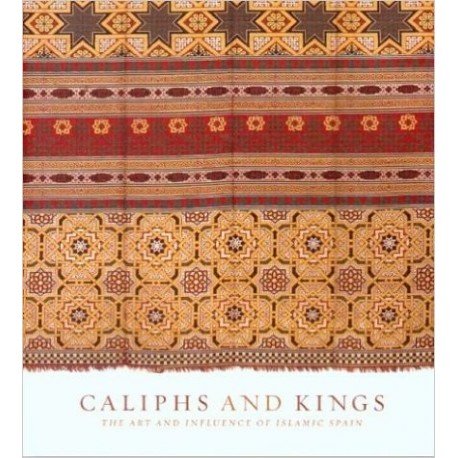Aucun produit
Meilleures ventes
-

Parler tunisien fissa !
32,00 € -

-

-

La cuisine algérienne
35,00 € -

Les prairies d'or 5 tomes
150,00 € -

-

-

CHRONIQUES DE TABARI
35,00 € -

-

Art
-
Français
- Langue
- Littérature
- Religions
- Droit Economie
- Art
- Arts de vivre
- Jeunesse
- Sciences humaines
- Histoire Géographie
- Arabe
- نوادر الكتب
- LIVRES RARES
Nouveaux produits
-

-

-

-

-

-

-

إكمال الأعلام بتثليث الكلام مجلدين
450,00 € -

ذاكرة للنسيان
18,00 €
-

Sahîh al-Boukhârî - Collection des 5 tomes
200,00 € 220,00 €
Déjà vus
 Agrandir l'image
Agrandir l'image
Caliphs and Kings: The Art of Islamic Spain
Freer Gallery of Art and Arthur M.
0-295-98421-10
''Caliphs to Kings'' includes rarely seen Islamic objects ranging from textiles to ceramics to gold. Emphasizing themes of longevity, continuity, and transmission in the Islamic decorative arts and sciences of medieval Spain, the book includes works dating from the time of the Arab conquest of the Iberian Peninsula in the eighth century to the final...
Caractéristiques
| Auteur | Heather Ecker |
| Editeur | Freer Gallery of Art and Arthur M. |
| ISBN | 0-295-98421-10 |
| EAN-13 | 9780295984216 |
| Date de parution | 2004 |
| Nombre de pages | 178 |
| Dimensions | 25 cm x 25 cm |
| Poids | 3000 g |
Résumé
''Caliphs to Kings'' includes rarely seen Islamic objects ranging from textiles to ceramics to gold. Emphasizing themes of longevity, continuity, and transmission in the Islamic decorative arts and sciences of medieval Spain, the book includes works dating from the time of the Arab conquest of the Iberian Peninsula in the eighth century to the final phase of Muslim life in Spain in the sixteenth century. Objects from tenth-century Cordoba illustrate the creation of a unique court aesthetic under the caliphate that was widely copied by both Muslim and Christian rulers in the following centuries. Later works show the eclectic aesthetic, intellectual, and political culture that resulted from the Christian conquests in the eleventh to the fifteenth centuries of the cities of Andalusia. During the fourteenth and fifteenth centuries, Muslim craftsmen working both in the kingdom of Granada and for Christian patrons (the crown, nobility, and the Church) in Seville, Toledo, Cordoba, and Valencia produced some of the most beautiful and evocative ceramics and textiles of the time, items that were exported throughout Europe and served as models for silk and ceramic industries in regions including the Italian peninsula. Works of particular note include a tenth-century ivory pyxis from Cordoba, an early fifteenth-century armorial carpet from Murcia made for the queen of Argon, and two exquisite, illuminated Hebrew Bibles.




